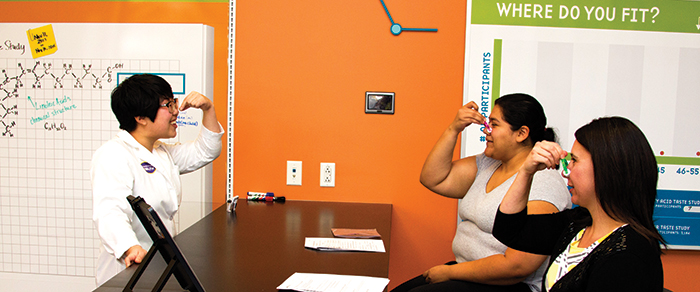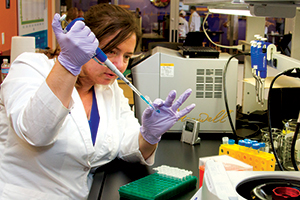
Richard Mattes' research into humans' ability to taste fatty acids is building the case for the existence of a sixth basic taste: fat. Mattes is a distinguished professor in the Department of Nutrition Science and newly appointed director of public health in the College of Health and Human Sciences.
The five widely accepted primary or basic qualities of the sense of taste — sweet, sour, salty, bitter and umami (also characterized as meaty) — are some of the first biological concepts taught to young children.
"They are taught that these sensations influence food preferences and may account for individual differences in food choice and nutrient intake," Mattes says. "They also help to protect against ingestion of unwholesome or toxic chemicals in foods. The sense of taste is the dietary gatekeeper.
"In basic biology the discovery of another dimension of taste is equivalent to discovering a new basic color," Mattes says. "A consensus is emerging in the field of sensory science that fattiness is another dimension of taste."
Long-term impact

Inside the Genetics of Taste Lab at the Denver Museum of Nature & Science with lab technician Leta Keane (above) and research manager Tiffany Nuessle (at top). (Photos by Rick Wicker, Denver Museum of Nature & Science)
Mattes says understanding the taste of fat will provide insights about our biological systems, how to develop food products to optimize health, and improve public health recommendations about diet and chronic disease risk reduction.
His research could contribute to nutrition science by validating fat as the sixth basic taste and enhancing understanding of how the sensory system of taste influences what and how much we eat. Fat often has a negative health connotation, but fats are found in most foods including animal products, grains, fruits and vegetables. There are higher levels in some vegetables such as avocados, olives and soybeans, and lower, but still measurable, concentrations in others such as leafy green vegetables.
When people comment on how fat tastes, they often describe tactile sensations such as creaminess or viscosity. Consider how drinking whole milk versus skim milk feels. Though not often associated with fat, the strong odor of some foods such as ripe cheese also is derived from fats. But Mattes has conducted an array of studies that indicate there also is a taste component to fat, or more specifically the fatty acids that makeup dietary fat. These studies focus not only on the sensations detected in the mouth, but also how the body responds physiologically to oral fat exposure. For example, when fat is being tasted it triggers a rapid and sustained elevation of blood lipids (triglycerides) linking taste to metabolism and possibly chronic disease risk. The odor and texture cues from fat are not as effective as taste for driving these kinds of responses. Moreover, these responses differ in lean and obese individuals, he says. To better understand these mechanisms, Mattes is looking at the role genetics play in the taste of fat.











